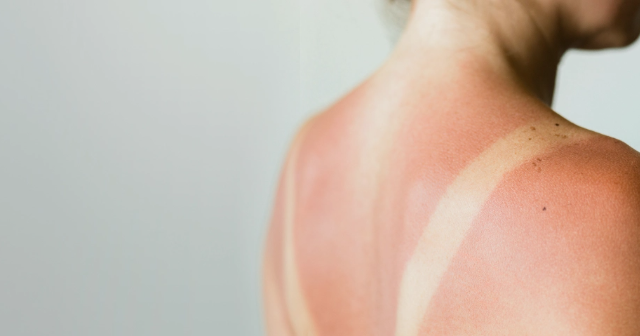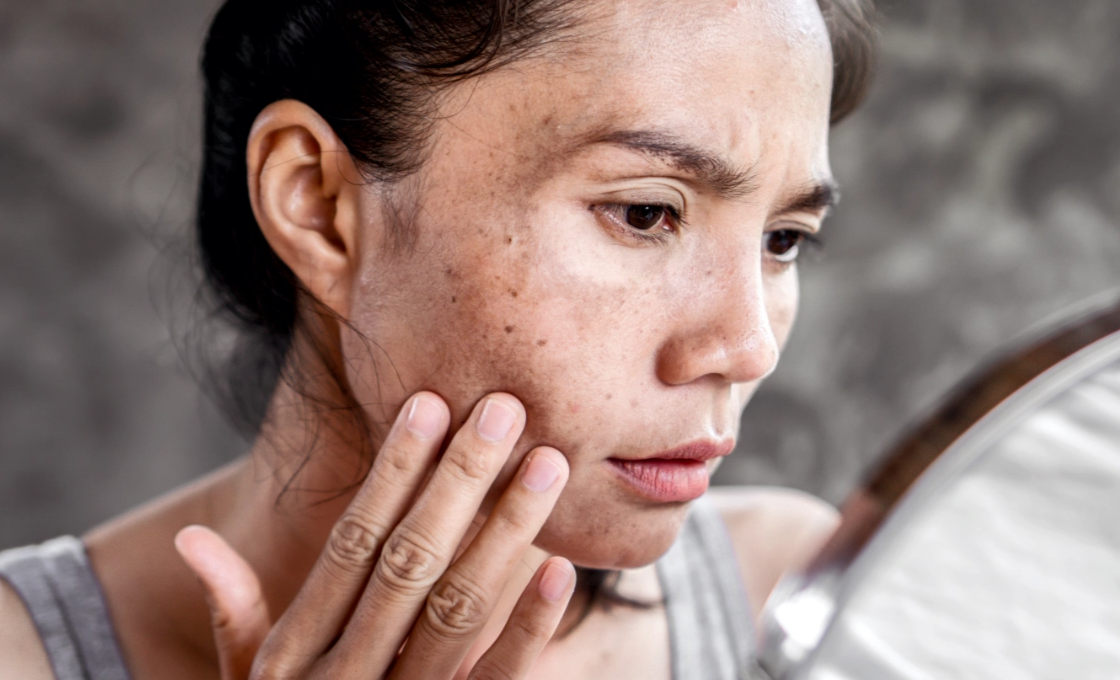

Sun Damage
What are the signs of sun-damaged skin?
If you use tanning beds or frequently go outside without wearing sunscreen, you are exposing your skin to the damaging effects of ultraviolet (UV) light. Photoaging and sun damage are popular terms used to describe how the sun prematurely ages your skin. Photoaging can make your skin look years older, as well as many other changes in the appearance of your skin. These include:
- Wrinkles
- Loose skin
- Rough, uneven skin texture
- Spider veins
As sun damage progresses, you may see signs of actinic keratosis. This is a precancerous skin growth that causes scaly, rough patches on the skin. Sun damage also increases your risk of developing skin cancer.
Is sun damage reversible?
Although some of the damage from the sun is permanent, your dermatologist can recommend treatments to help reverse sun-damaged skin. Dermatologists often use more than one treatment option to reduce the signs of photoaging. This helps provide your skin with a healthy and natural appearance and effectively treats multiple signs of aging.
REQUEST NOWWhat can a dermatologist do for sun-damaged skin?
If you’re wondering how to repair sun-damaged skin, seeing a board-certified dermatologist is the first step. From laser treatments and chemical peels to microdermabrasion and topical treatments, our Forefront dermatologists can help you reduce the signs of photoaging.
Topical Treatments: Topical treatments containing retinol are a sun exposure damage treatment that can help you even out your skin tone, smooth fine lines, and fade dark spots. Retinol is a derivative of vitamin A. It works by stimulating collagen production and encouraging cell turnover, which can help you achieve smoother and softer skin. You can buy less potent forms of retinol over-the-counter, but your Forefront dermatologist can give you a sun-damaged skin prescription for creams or serums with retinol.
Chemical Peels: Chemical peels remove damaged skin cells from the top layers of your skin. Although they vary in type and intensity, most chemical peels can remove brown spots and dramatically improve the texture and tone of photodamaged skin.
Microdermabrasion: Microdermabrasion can improve sun-damaged skin by gently exfoliating the top layer of skin. It’s a non-invasive treatment that uses diamond microparticles or crystals to encourage the growth of collagen and smooth and brighten your skin.
Laser Resurfacing: Laser resurfacing is a dermatologist treatment to reverse sun-damaged skin that uses short, concentrated light beams to remove damaged layers of skin. Laser treatment reveals fresh, new skin underneath, helping improve the appearance of dark spots, wrinkles, and uneven skin tone and texture.
Intense Pulsed Light: Intense pulsed light is a photoaging treatment that can improve the appearance of age spots, broken blood vessels, and a blotchy or ruddy complexion. The treatment delivers a series of pulses to heat to destroy brown spots, sun spots, and broken capillaries.
Injectable Treatments: Injectables can reduce the appearance of wrinkles and restore lost volume caused by sun damage. BOTOX® Cosmetic is an injectable treatment that smooths wrinkles by relaxing your facial muscles. Dermal fillers, such as Restylane® and Juvederm®, are made of hyaluronic acid. This is a natural substance that hydrates your skin and increases its volume.
Photodynamic Therapy: Photodynamic therapy can minimize the effects of sun damage and treat actinic keratoses. During treatment, specific wavelengths of light are applied to activate a topical medicine. This selectively destroys abnormal skin cells, including potentially cancerous skin cells. After treatment, the damaged skin cells flake off, revealing healthier, younger-looking skin.
How can I prevent sun damage?
Most cases of sun damage occur due to your daily exposure to the sun. Prevention is crucial for avoiding sun damage from ultraviolet light and maintaining the results from a sun-damaged skin treatment. Wearing a broad-spectrum sunscreen with an SPF of at least 30 is the easiest way to prevent sun damage. You should wear sunscreen every day, even on cloudy days.
You can also try to avoid being outdoors between the hours of 10 am and 3 pm. During this time, the sun’s ultraviolet rays are the strongest. Take precautions to protect your skin from the sun by wearing light, long-sleeved shirts and long pants. If you frequently use tanning beds, you should stop.
Our board-certified dermatologists can help you find the best treatment for sun-damaged skin. To learn more about your treatment options or how you can minimize the effects of sun damage, find the Forefront Dermatology office near you and schedule your consultation today.

Interested in Sun Damage? Request a consultation with a skin specialist today.
*Treatment options may vary at each location.Please confirm your desired treatment is offered at your preferred location when scheduling. *Age Restriction.
For patients scheduling who are under 18 years of age (19 in Alabama) please make sure you have permission from your parent or legal guardian to schedule this appointment. Your parent or legal guardian must accompany you on your initial visit and on certain subsequent visits to provide appropriate informed consent.